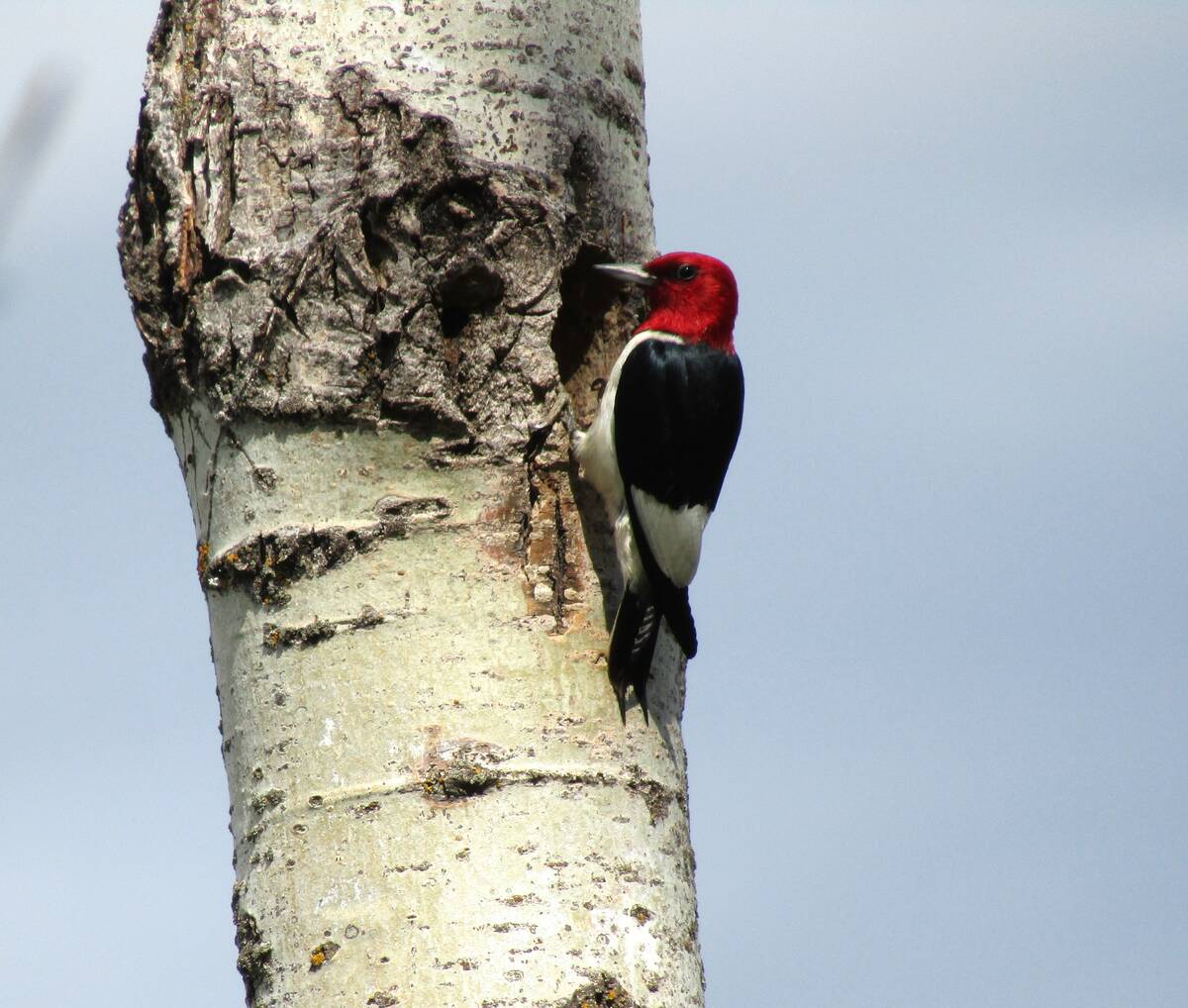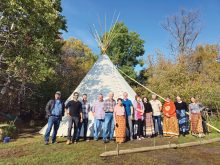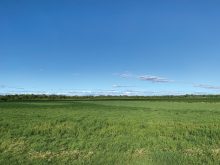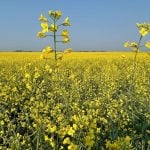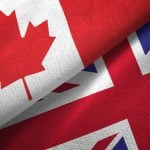Over the last century, many of our Manitoba birds have suffered an obvious reduction in numbers, but the red-headed woodpecker seems to be among those making a comeback in Manitoba.
Sometimes referred to as a “flying checkerboard” thanks to its dramatic black, white and red plumage, it’s one to be on the lookout for if you live in southern Manitoba.
Its ranges is typically south of the boreal forest, as far north as Swan River.
Read Also

Manitoba boosts stake in cereals centre to $20 million
Premier Wab Kinew said the additional project funds will help ‘Trump-proof’ the provincial economy.
The red-headed woodpecker (scientific name, Melanerpes erythrocephalus) is a medium-sized bird. If you see one fly, you’ll understand why it receives the ‘checkerboard’ label. The crimson head, snow-white body and black and white wings are especially striking when seen in flight.
It’s our only woodpecker that sports a totally red head, both for males and females. Young birds, when they first fledge, have a dark greyish-brown head and body, but bold white wing patches identify them as red-heads.
This woodpecker is omnivorous, foraging on the ground for seeds, the air for various insects and in trees for wood-boring insects. Decaying trees are particularly valuable, as this is where the birds excavate cavities for nesting and where they like to perch. They may re-use a cavity for several years, or the holes may later be used by other birds or by squirrels.

Woodpecker numbers
The future of the red-headed woodpecker in Manitoba remains uncertain, but landowners and nature organizations that are working to protect their natural habitat are improving their chances.
This woodpecker was officially classed as threatened in 2007 by the Committee on the Status of Endangered Wildlife (COSEWIC) and is listed as a species at risk in Manitoba, Ontario and Quebec (the provinces where it is normally found in summer). It was estimated that the Canadian population of these birds declined by approximately 63 per cent from 1970 to 2015, largely due to loss of nesting sites and suitable habitat, as well as insecticide-driven reduction in its food supply, competition with the introduced European starling, predation by hawks and domestic cats and collisions with buildings, power lines, etc.
There are recent signs of recovery, and the bird is now being sighted again in places previously devoid of the species.
Nature Manitoba has sponsored several surveys to count red-headed woodpeckers in areas in the Interlake − especially around the Shoal Lakes IBA (Important Bird Area) and around the Oak Lake/Plum Lake IBA. These surveys have shown a definite increase in numbers. Other southern Manitoba areas also report an increase in sightings.
Near MacGregor, where I live, I had only seen one of these birds prior to the last 10 years or so. Now I see them frequently in pastures and mixed vegetation areas. Last summer I spotted them in at least four different local locations. The flying checkerboard appearance always excites me.

Spotting a Red-headed woodpecker
Pastures and woodlands with are dead or dying deciduous trees and short undergrowth are especially good sites to watch for these birds.
Unlike most of the woodpecker family, the red-headed woodpecker migrates south in winter into the central United States. Look for them in Manitoba in spring when you might discover them digging out space for a nest, usually quite high up in a tree. They are often territorial and will chase other woodpeckers away from their nesting territory.
Late July and August are also good times to watch for them. Adults will be flying back and forth feeding the young in their nest. This will last for up to four weeks (a longer period in the nest than most species). By mid-August or September, young birds may be seen flying around the nesting area.

